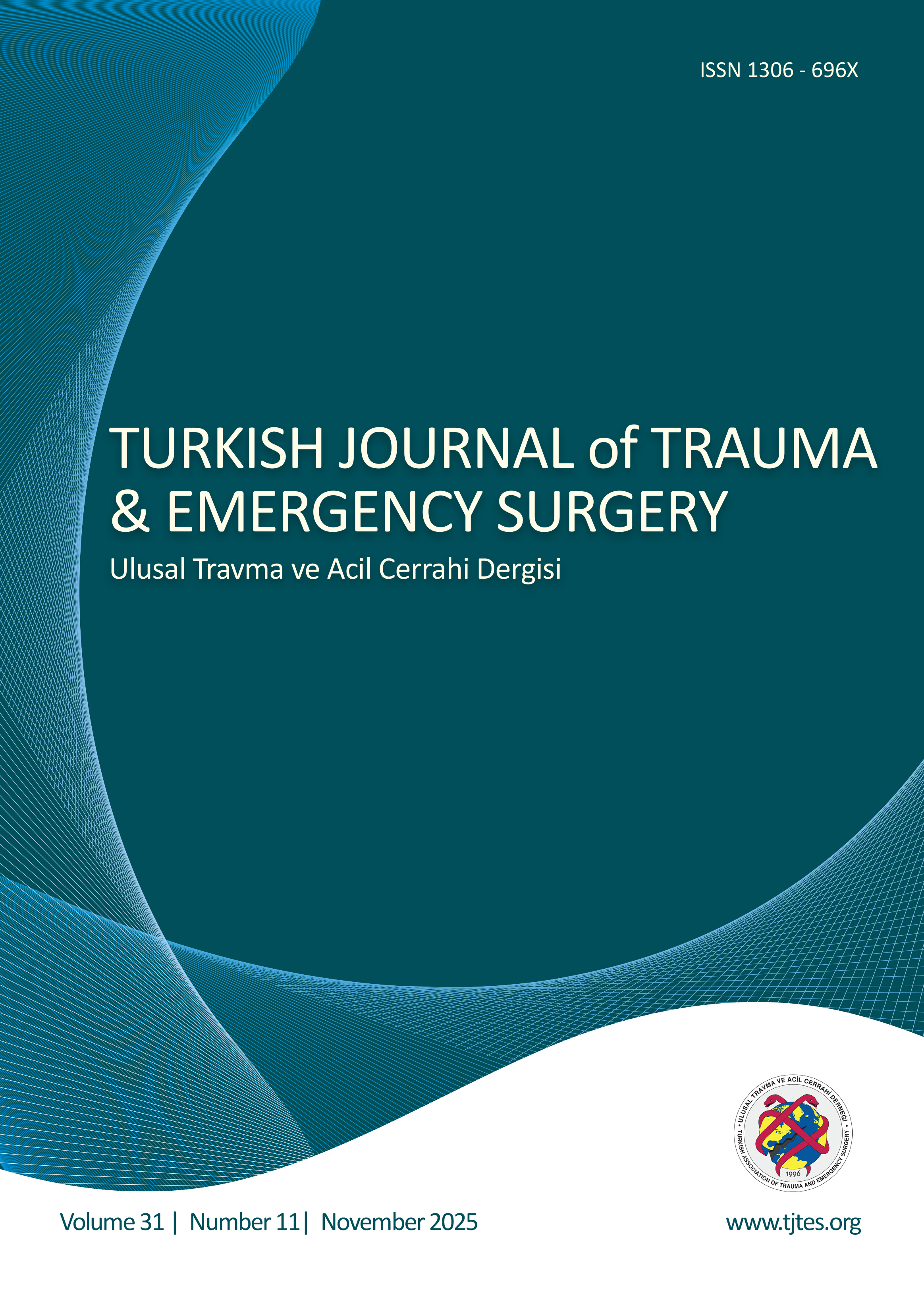Hızlı Arama
İlişkili lezyonlarla birlikte olan travmatik beyin omurilik sıvısı kaçaklarının cerrahi tedavisi
Fatih Alagoz1, Ergun Daglıoglu1, Murat Korkmaz2, Ali Erdem Yıldırım1, Ozhan Merzuk Uckun3, Denizhan Divanlıoglu1, Omer Polat4, Ali Dalgıç1, Arif Osun2, Fevzi Yılmaz5, Muge Sonmez5, Ahmet Deniz Belen11Ankara Numune Eğitim Ve Araştırma Hastanesi, Beyin Cerrahisi Kliniği, Ankara2Kütahya Evliya Çelebi Eğitim Ve Araştırma Hastanesi, Beyin Cerrahisi Kliniği, Kütahya
3Yunus Emre Devlet Hastanesi, Beyin Cerrahisi Kliniği, Eskişehir
4Özel Fatma Hatun Hastanesi, Beyin Cerrahisi Kliniği, Bolu
5Ankara Numune Eğitim Ve Araştırma Hastanesi, Acil Kliniği, Ankara
AMAÇ: Kafa travması beyin omurilik sıvısı (BOS) fistülü ile önemli bir ilişki gösterir.
GEREÇ VE YÖNTEM: Bu çalışmada travmaya bağlı gelişen otore, rinore ve oküloresi bulunan 22 hastanının cerrahi yaklaşımı sunuldu. Hastaların büyük çoğunluğu Glaskow Koma Skalası (GKS) 14 puanın altında olan şiddetli kafa travmalı hastalardır. Bu hastaların 11inde depresyon fraktürü, altısında epidural hematom ve dördünde ise basınçlı pnemosefalus eşlik etmekteydi.
BULGULAR: Rinore, en sık görülen semptom olup 15 hastada, otore yedi hastada ve okülore iki hastada saptandı. Rinoresi olan iki hastada ayrıca otore ve okülore de mevcuttu. On iki hasta tek taraflı yaklaşımla, 10 hasta ise bifrontal yaklaşımla opere edildi.
TARTIŞMA: Beyin omurilik sıvısı kaçağı ile prezente olan travma olgularında, konservatif tedavinin aksine yapılan erken cerrahi girişimler BOS kaçağına bağlı gelişebilecek komplikasyonların engellenmesinde son derece etkili bir yöntemdir.
Anahtar Kelimeler: BOS kaçağı, cerrahi; okülore; otore; rinore; travma.
Surgical management of traumatic cerebrospinal fluid fistulas with associated lesions
Fatih Alagoz1, Ergun Daglıoglu1, Murat Korkmaz2, Ali Erdem Yıldırım1, Ozhan Merzuk Uckun3, Denizhan Divanlıoglu1, Omer Polat4, Ali Dalgıç1, Arif Osun2, Fevzi Yılmaz5, Muge Sonmez5, Ahmet Deniz Belen11Department Of Neurosurgery, Ankara Numune Training And Research Hospital, Ankara2Department Of Neurosurgery, Kutahya Evliya Celebi Training And Research Hospital, Kutahya
3Department Of Neurosurgery, Yunus Emre State Hospital, Eskisehir
4Department Of Neurosurgery, Fatma Hatun Private Hostpital, Bolu
5Department Of Emergency, Ankara Numune Training And Research Hospital, Ankara
BACKGROUND: Head trauma is associated with a significant risk of cerebrospinal fluid (CSF) fistula.
METHODS: In this study, it was aimed to report twenty-two cases subjected to operative intervention for otorrhea, rhinorrhea and oculorrhea with associated traumatic lesions. Majority of the cases had moderate to severe head trauma with a Glascow Coma Scale (GCS) score under 14. The study group included eleven cases with depression fractures, 6 with epidural hematomas and 4 with tension pneumocephalus.
RESULTS: Rhinorrhea was the most common presenting symptom encountered in fifteen cases; whereas, otorrhea was prominent in 7 and oculorrhea in 2 cases. Two patients having rhinorrhea also had oculorrhea and otorrhea. The patients were operated with unilateral approaches in twelve and bifrontal approaches in ten of the cases.
CONCLUSION: Early surgical intervention should be performed in cases presenting with CSF fistula and associated traumatic lesions without considering conservative management to provide an effective control of associated complications due to CSF fistulas.
Keywords: CSF fistula, oculorrhea; otorrhea; rhinorrhea; surgery; trauma.
Makale Dili: İngilizce





